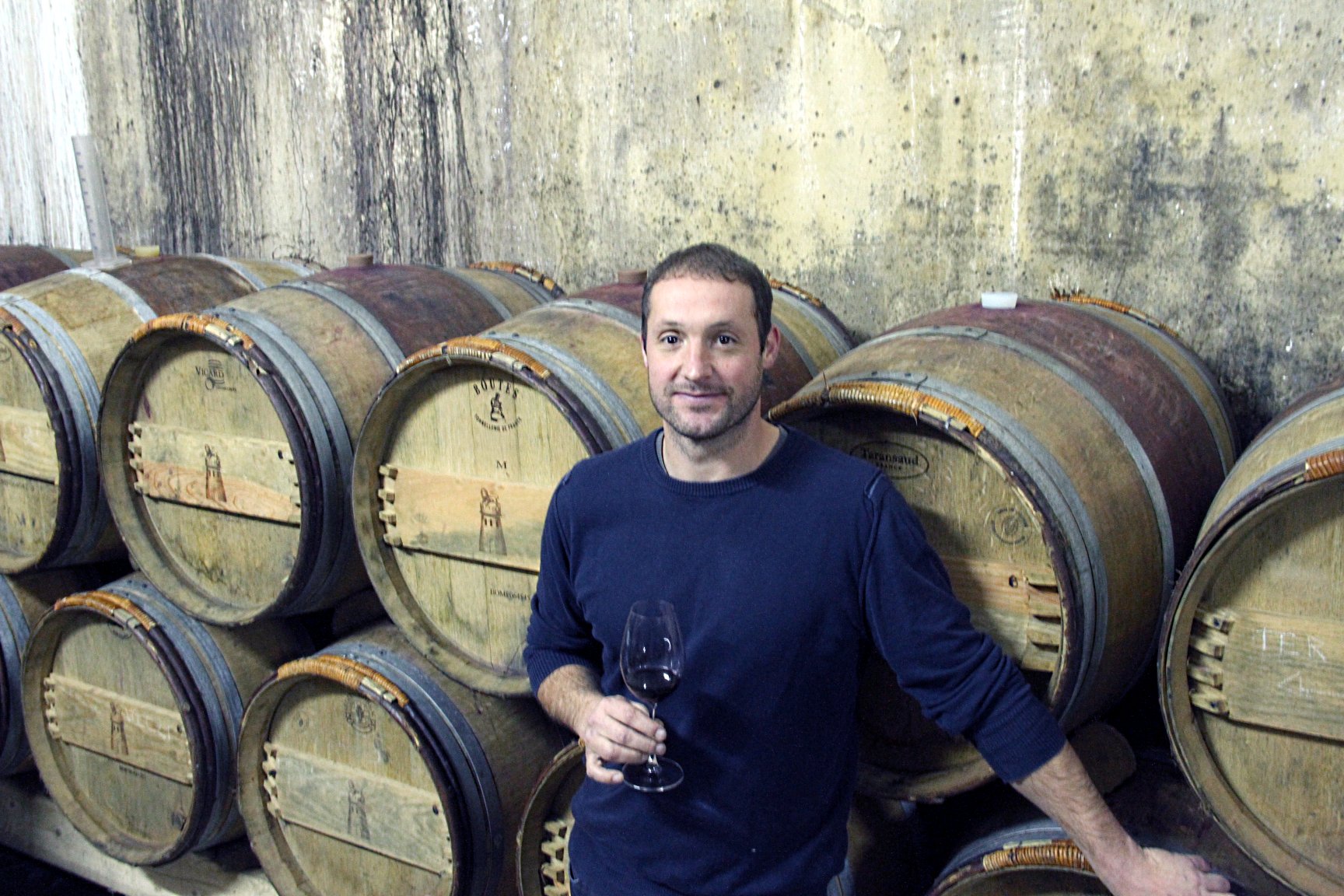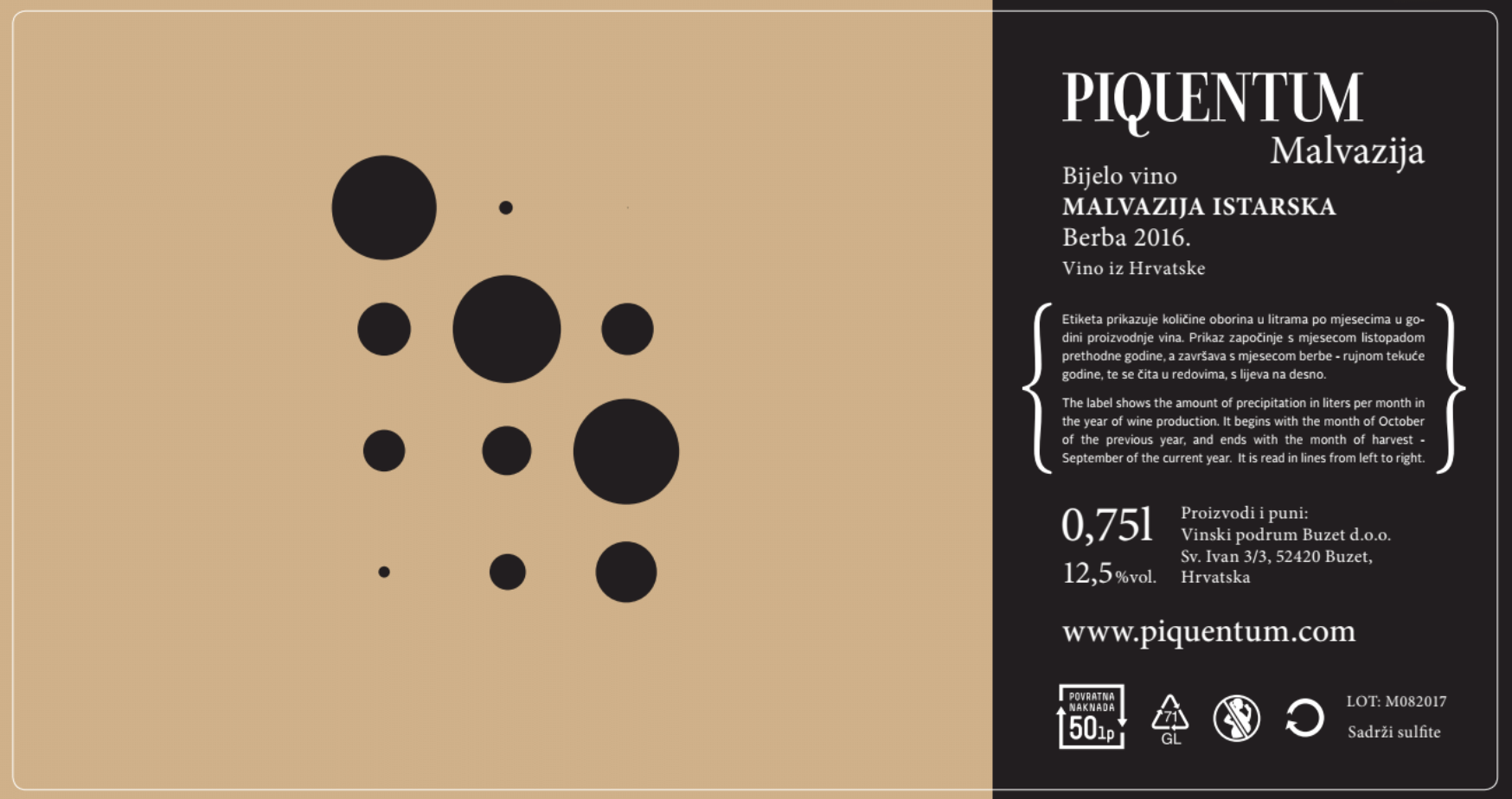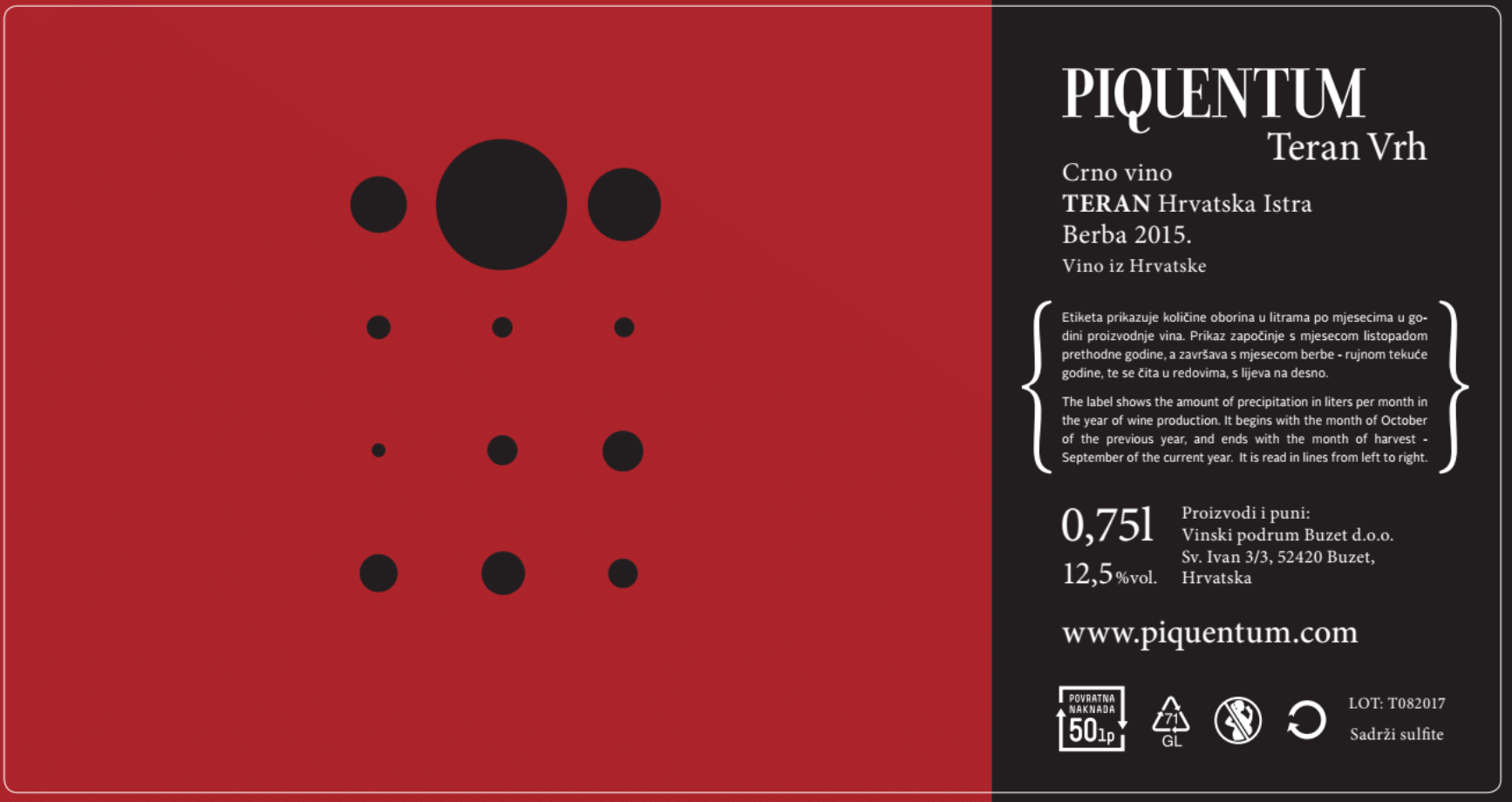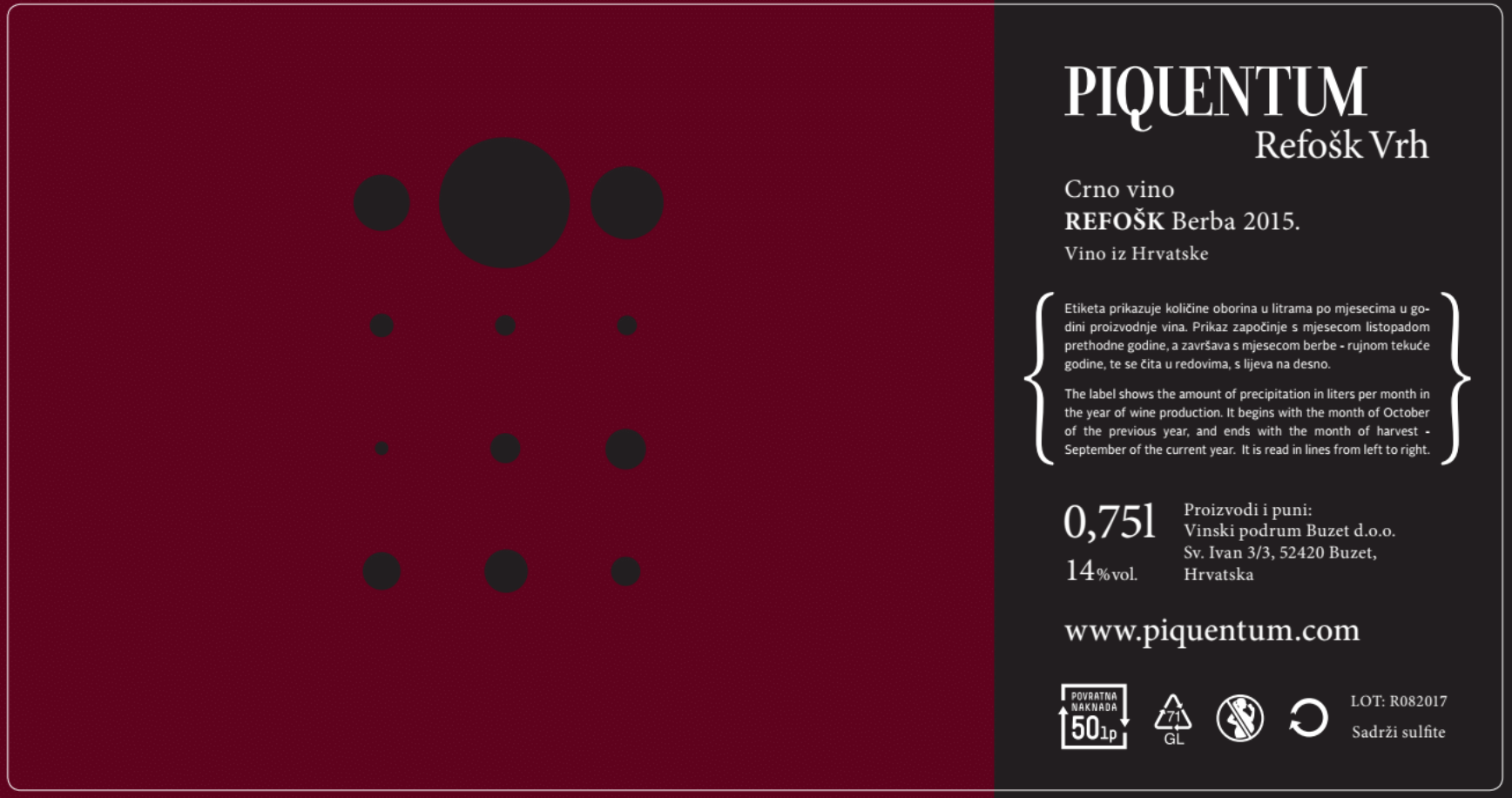
This is a tale of a son of a Frenchwoman and an Istrian father, growing native Croatian grapes and making them in an old Mussolini-era concrete water tank. Born in French Basque Country (Jurançon) in the foothills of the Pyrenees, Dimitri Brecevic studied oenology in France and then worked at Domaine de Chevalier in addition to working harvests in Australia, New Zealand, Bordeaux, and Burgundy. In 2004 he decided to invest himself in his father’s homeland of Istria near the town of Buzet. Not that Buzeet! The name “Piquentum” is the ancient Roman word for the beautiful hilltop town of Buzet. Dimitri’s arrival falls right in line with the regions long history of Romans, Goths, Franks, and Bavarians. The Republic of Venice even had a solid 500+ year run. And although briefly a part of the Austro-Hungarian Empire until the World Wars, it was briefly once again a Province of Italy until 1947 when Yugoslavia was created and Italy ceded the territory. Istria is also the largest peninsula in the Adriatic, Croatia’s westernmost region, and borders both Italy and Slovenia. With only about 1750 square miles, over 280 miles are coastline with 35% covered with oak and pine forests. Indigenous grapes like Malvazija Istarska and Teran coupled with the mineral rich white and red karst soil all seem to echo the salinity of this pristine coastline and the pungency of its truffle-ridden interior.
The climate, the nature of the soils, everything in Istria is perfect for quality viticulture. Istria is the northern edge of Mediterranean, and in the winter, it can be very cold when the strong bura wind blows from the north. In September, when usually vintage takes place, it is chilly during the night and this furthermore helps to maintain nice acidity and aromas in the grapes. The most significant white grape is the Istrian Malvazjia, which occupies approximately two thirds of the entire grapevine plantations extending over this area. The most typical red grapes are Teran, and its curious relative – Refošk (more about the similarities and differences between these below). With currently 4.5 ha of vineyards: Malvazija 60%, Teran 20%, Refosco 20%, Dimitri’s goal is to get the vines competing for water and nutrients, by working the land by hand, and ensuring the roots penetrate deeper and deeper into the alternating ferrous-rich red and white flysch soils that define Istrian terroir.
Grapes are hand-picked and then slowly pressed into tank without temperature control. Since the winery is a converted concrete water tank, the temperature is a constant 10-11ºC all year long. Whist this is perfect for ageing, it is often too cold to get a native fermentation started. Using fans to draw in the warmer outside air to around 14ºC, all of Dimitri’s wines complete a wild ferment without the use of added yeast, bacteria, enzymes, or any additives. After a long and slow fermentation without stalling fermentation or cold soaks, the wines are bottled unfiltered with just enough sulphur.

In contrast to the iron rich red soil of Terzolo, Štoka, and Coronica, the grapes for the Malvazija Blanc are planted in the predominately flysch-rich white soil unique to Istria. After 2-3 days on the skins the wine is then fermented in stainless steel, resulting in a wonderfully fine-grained texture and straw yellow colour. Dimitri also purchases some grapes from an old Malvazija vineyard (70 + y.o. vines) owned by an elderly woman. This particular wine has terrific minerality and almost phenolic texture, oozing salt and spice.

The Motovun Teran is destemmed, undergoes a 2-4 weeks spontaneous fermentation and natural malolactic fermentation, is aged in wood (barriques) from 14 to 18 months and bottled without filtration. This wine has the remarkable ability to be incredibly fragrant and coat the inside of the glass like syrup, while still being a light bodied, low alcohol wine with acidity built for the Istrski pršut (Istrian Prosciutto) that hangs from the ceiling of the winery. Primary and malolactic fermentation are completely with native yeasts. While Teran is in the Refosco (& Refošk) family, it differs in that it has slightly higher acidity and pronounced iron and sanguine flavours. Historically, Teran was given to woman after childbirth to combat anaemia due to the rich iron content. A great pairing with charcuterie, oily cured fish, fish stews, and blood sausage.

Dimitri’s Refošk is almost the opposite, being full-bodied, warm, plummy and almost chocolatey in texture. This would work well with game.
Here is Dimitri Brecevic’s take on Teran and Refosk:
Regarding Teran and Refosk it is complicated because Slovenians and Croatians don’t agree…In Slovenia, Teran and Refosk are the same variety, but change name according to the terroir. On “terra rossa” they call it Teran, on other soils it is known as Refosk…
In Istria we consider that we have two different varieties, regardless of the soil. Now, it is complicated by the fact that there are a lot of different clones of Teran and also of Refosk, and that some of them are really similar…But the two most common in Istria “Istarski Teran” (istrian teran) and “Refosk crvena peteljka” (refosco pedonculo rosso), are completely different and you can taste that in my wines.
The Teran has low alcohol, high acidity, spicy aromas, and distinctive peppery notes. The grape is sensitive in the vineyard, both to strong sun (burn) and also to humidity (botrytis). Refosk (pedonculo rosso), conversely, often has high alcohol, low acidity, displaying fruity and chocolate aromas. Easier to cultivate, but sensitive to oidium.
Finally, it seems that the most popular Refosk in Slovenija is “Refosk zelena peteljka” (refosco pedonculo verde), which also has pronounced acidity… (in other words, similar to our Teran!!!)
*
Interested in finding out more about any of Piquentum’s wines? Buy online here or contact us directly…
Retail: shop@lescaves.co.uk / 01483 554750

